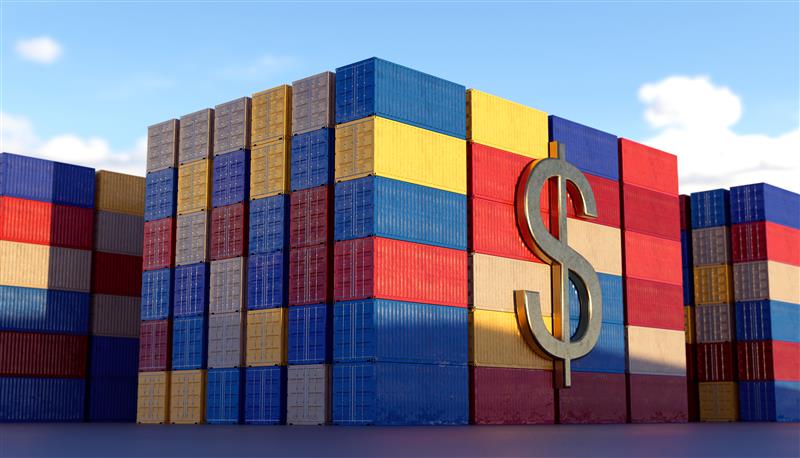
Trump’s New Tariffs Add Pressure to a Fragile Global Economy
The latest round of U.S. trade tariffs announced on Wednesday is expected to drain more energy from a global economy that is still reeling from the post-pandemic inflation surge, burdened by record-high debt and rattled by ongoing geopolitical tensions.
Depending on the next steps taken by President Donald Trump and other global leaders, this moment could be remembered as a turning point for a globalized economic system that has long relied on the strength and reliability of the United States as its cornerstone.
“Trump’s tariffs carry the risk of dismantling the global free trade order that the United States itself has led since World War II,” said Takahide Kiuchi, executive economist at the Nomura Research Institute.
But in the coming months, the most immediate and noticeable impact will likely come from rising prices — and the subsequent drop in demand — as thousands of goods traded by consumers and businesses worldwide become more expensive due to the new levies.
“I see this as a drift toward weaker performance for both the U.S. and the global economy, increasing uncertainty and possibly moving us toward what could be called a global recession,” said Antonio Fatas, a macroeconomist at INSEAD business school in France.
Speaking from the White House Rose Garden, Trump stated that he would impose a baseline 10% tariff on all imports and displayed a chart outlining higher tariffs on major U.S. trading partners, including 34% on China and 20% on the European Union.
A 25% tariff on automobiles and auto parts had already been confirmed. According to Trump, these tariffs are intended to bring strategically vital manufacturing capabilities back to the United States.
Under Trump’s newly imposed global tariffs, the overall U.S. tariff rate on imports has jumped to 22% — a level last seen around 1910 — up from just 2.5% in 2024, noted Olu Sonola, head of U.S. economic research at Fitch Ratings.
“This is a game changer, not just for the U.S. economy but for the global economy as a whole,” Sonola said. “Many countries will likely find themselves slipping into recession.”
International Monetary Fund Managing Director Kristalina Georgieva told a Reuters event this week that she does not currently anticipate a global recession. However, she noted that the IMF would soon issue a small downward revision to its 2025 global growth forecast of 3.3%.
The impact of these tariffs is expected to vary widely across nations, with rates ranging from 10% on imports from the UK to a staggering 49% on Cambodian goods.
If this escalates into a broader trade war, the effects could be especially severe for major exporters like China, which may be forced to find alternative markets amid sluggish domestic consumption.
“Asian economies are likely to be hit harder than others by these reciprocal U.S. tariffs,” said Marcel Thieliant, head of Asia-Pacific research at Capital Economics. “Not only are they facing steeper tariff rates, but they are also more reliant on U.S. demand for goods.”
If the U.S. itself edges toward recession due to these measures, the ripple effects could be devastating for developing countries whose economies are closely tied to America’s.
Stock markets plunged on Thursday as investor anxiety mounted, prompting a flight to the safety of bonds, gold, and the Japanese yen.
An ‘Inverted World’ Emerges
The potential ramifications for central banks and national governments are also significant.
If the global supply chains — which for years have helped keep consumer prices in check — unravel, inflation could consistently run hotter than the 2% target widely accepted by central banks.
This could complicate monetary policy, particularly for the Bank of Japan, which may feel pressured to raise rates to curb inflation just as other major central banks consider cutting theirs — all while Japan’s export sector suffers under U.S. tariffs.
Beyond damage control and pleas for exemptions from Washington, many countries have few options. Japan, which now faces a 24% reciprocal tariff on autos, and South Korea, slapped with a 25% rate, have already announced emergency measures to support impacted businesses.
Despite being longstanding U.S. allies, both were singled out by Trump as major offenders of unfair trade practices.
Japan’s trade minister warned that these U.S. levies could breach World Trade Organization (WTO) rules but offered only that Tokyo was exploring “various options” in its response.
“Given its strong national security ties with the United States, Japan holds little leverage to win any meaningful concessions,” said Nomura’s Kiuchi.
Australian Prime Minister Anthony Albanese criticized the tariffs as “not the act of a friend” but ruled out retaliatory action.
Sluggish economic output will make it even more difficult for governments to service the world’s record-high $318 trillion debt and allocate funds toward key budget priorities such as defense, climate action, and social welfare.
And what if Trump’s goal of reviving U.S. manufacturing investment doesn’t materialize — especially given ongoing labor shortages in a country already near full employment?
In that case, some observers believe Trump may pursue alternative, riskier measures to eliminate the U.S. trade deficit — such as pressuring other nations to rebalance foreign exchange rates in favor of U.S. exporters.
“We’ll likely continue to see him float increasingly risky ideas to counter the persistent strength of the dollar,” said Freya Beamish, chief economist at investment strategy firm TS Lombard.
Such steps could undermine the privileged status of the U.S. dollar as the world’s reserve currency — a possibility most analysts still view as unlikely, if only because no real alternative exists.
Nevertheless, European Central Bank President Christine Lagarde on Wednesday emphasized the need for Europe to accelerate reforms in order to stay competitive in what she called an “inverted world.”
“Everyone benefited from a hegemon — the United States — that was committed to a multilateral, rules-based order,” she said, reflecting on the post-Cold War era of low inflation and booming international trade.
“Today, we must contend with closure, fragmentation, and uncertainty.”
